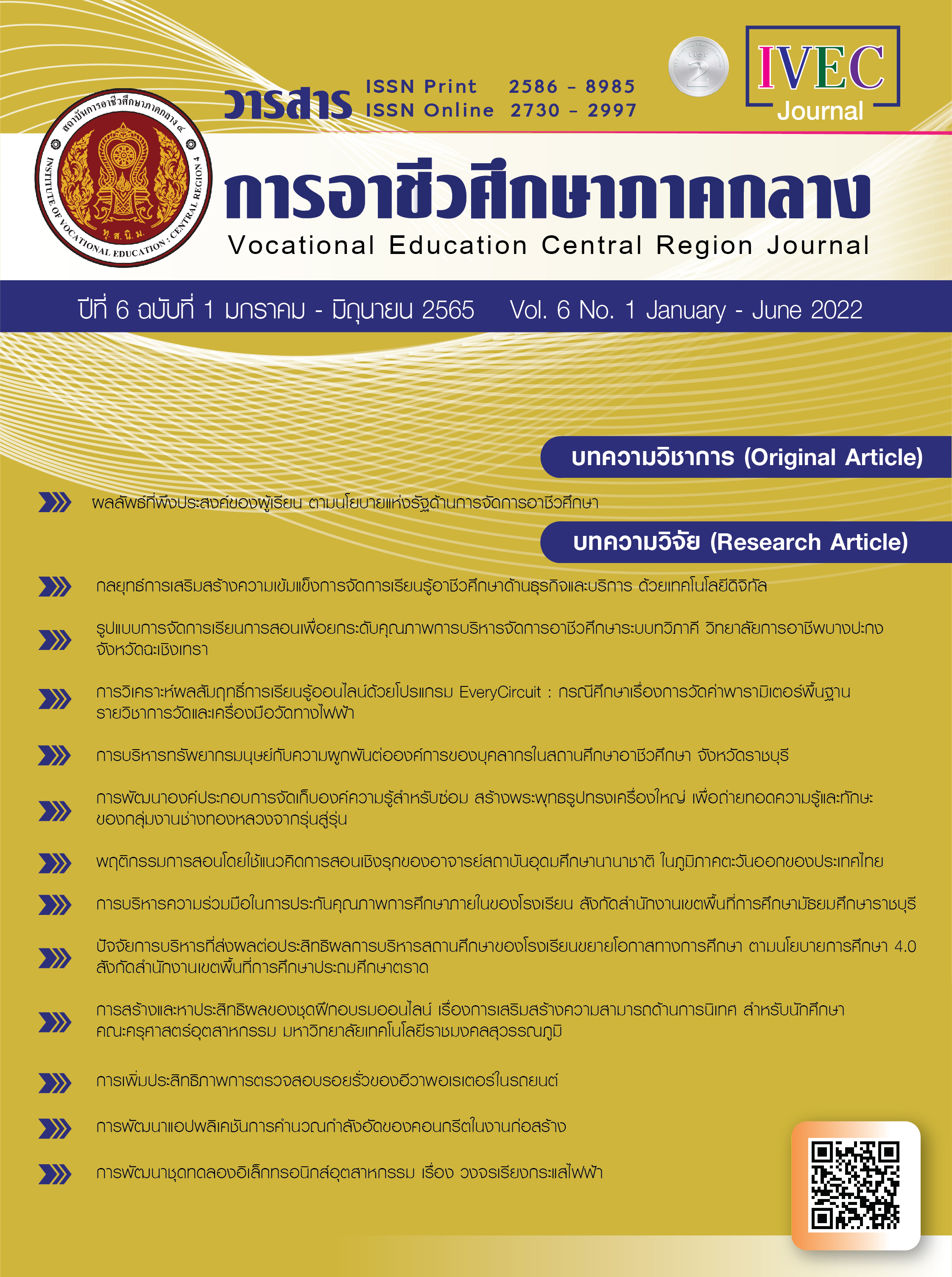Teaching Behaviors Using the Concept of Active Learning of Teachers of International Higher Education Institutions in the Eastern Region of Thailand
Main Article Content
Abstract
Teaching behaviors using the concept of active learning of teachers of international higher education institutions in the eastern region of Thailand consist of the 4 purposes as follow: To study learning management behaviors by using the Active Learning concept of teachers as perceived by students. To compare learning management behaviors as perceived by students of different gender, faculty, program, and year. To compare learning management behaviors in business administration and other disciplines, and to study the relationship between Active Learning teaching behaviors as per students' perceptions and GPAX ages of students. In conclusion, the teaching of teachers by using Active Learning concepts found that the overall opinions were at a high level. By each aspect, it was found that the teaching efficiency of teachers had the highest average, followed by the benefits, the measurement and evaluation of the highest teaching, followed by the teaching process. place and audiovisual equipment with the lowest mean. Business Administration Students With other faculty students There are different opinions in general. With statistical significance at the level of 0.001 and by each aspect found that There are differences in the teaching and learning process and the benefits with statistical significance at the 0.001 level. And equipment There are statistically significant differences at the 0.001 level. A comparison in different faculties by pair The Scheffe' method found that teaching in the Faculty of Nursing taught with Active Learning more significantly than all other faculties at the 0.001 level and found that the Faculty of Education taught Active less learning than the Faculty of Business Administration Faculty of Human Sciences and Faculty of Public Health with statistical significance at the level of 0.001. The age of students had a positive relationship with the Active Learning teaching in each area and over all with statistical significance at the level of 0.001 and found that GPAX had a negative relationship with Active Learning Teaching in the area. Equipment and evaluation with statistical significance at the level of 0.05, 0.01, respectively.
Article Details

This work is licensed under a Creative Commons Attribution-NonCommercial-NoDerivatives 4.0 International License.
|
บทความ ข้อมูล เนื้อหา รูปภาพ ฯลฯ ที่ได้รับการตีพิมพ์ในวารสาร การอาชีวศึกษาภาคกลาง ถือเป็นลิขสิทธิ์ของวารสารการอาชีวศึกษาภาคกลางหากบุคคลหรือหน่วยงานใดต้องการนำทั้งหมดหรือส่วนใดส่วนหนึ่ง ไปเผยแพร่ต่อหรือเพื่อกระทำการใด ๆ กองบรรณาธิการไม่สงวนสิทธิ์ ในการคัดลอกบทความเพื่อการศึกษาแต่ให้อ้างอิงแหล่งที่มาให้ครบถ้วน สมบูรณ์ สงวนสิทธิ์ โดย สถาบันการอาชีวศึกษาภาคกลาง 4 ที่ตั้ง 90 ถนนเทศา ตำบลพระปฐมเจดีย์ อำเภอเมือง จังหวัดนครปฐม โทรศัพท์ 034 242 856 , โทรสาร 034 242 858 ISSN : 3056-9176 (print) ISSN : 2985-2382 (online) |
References
พงศ์เทพ จิระโร. (2561). หลักการวิจัยทางการศึกษา: Principles of Educational Research (พิมพ์ครั้งที่ 8). ชลบุรี: บัณฑิตเอกสาร.
เนาวนิตย์ สงคราม. (2557). การศึกษานอกสถานที่และการศึกษานอกสถานที่เสมือนเพื่อการศึกษาเชิงรุก. กรุงเทพฯ: จุฬาลงกรณ์มหาวิทยาลัย.
ศักดา ไชกิจภิญโญ. (2548, พฤษภาคม-สิงหาคม). สอนอย่างไรให้ Active Learning. วารสารนวัตกรรมการเรียนการสอน, 2,(2), หน้า 12-15.
Bonwell, C. C., and Eison, J. A. (1991). Active Learning: Creating Excitement in the Classroom. Washington, D.C.: School of Education and Human Development, George Washington University.
Fink, L. D. (2003). Creating significant learning experiences: An integrated approach to designing college courses. San Francisco: Jossey Bass.
Krejcie, R. V., & Morgan, D. W. (1970). Determining sample size for research activities. Journal of Education and Psychological Measurement, 30(3), pp. 607-610.
Matveev, A. V., & Milter, R. G. (2010). An implementation of active learning: assessing the effectiveness of the team infomercial assignment. Innovations in Education and Teaching International, 47(2), 201-203
Rotgan, J. I., & Schmidt, H. G. (2011). The role of teachers in facilitating situational interest in an active-learning classroom. Teaching and Teacher Education, 27(2011), 37-42.


